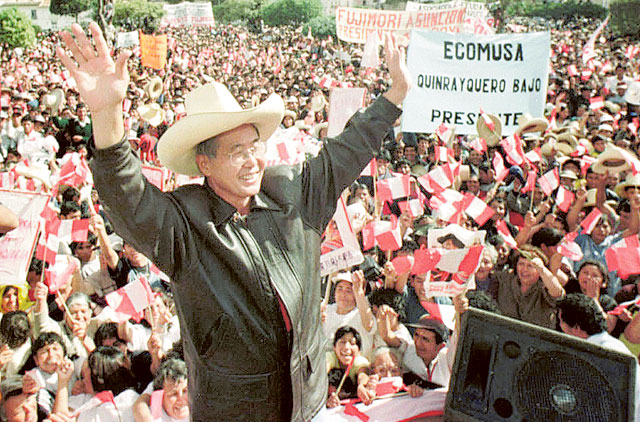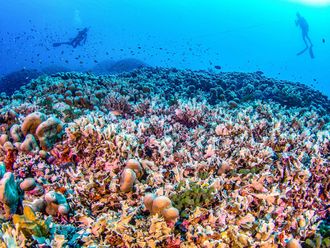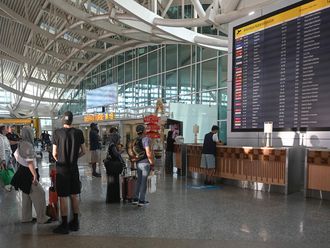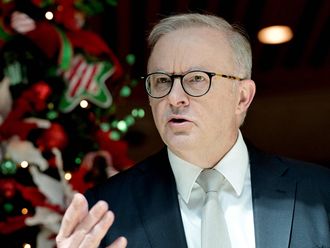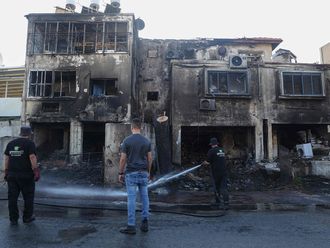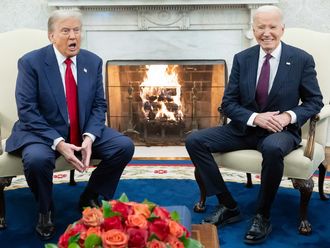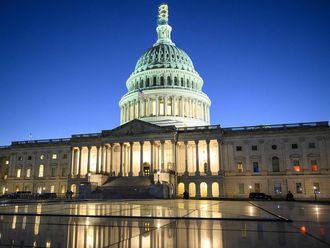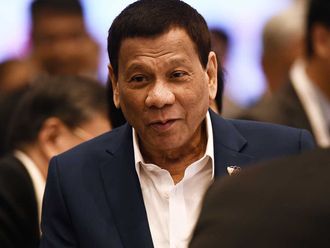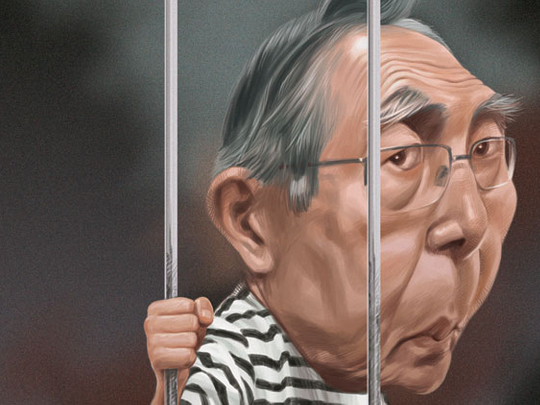
Dubai: Will the real Alberto Fujimori please stand up? Is he the simple agronomy professor who single-handedly fought off economic collapse and the threat of Marxist-inspired terrorism to modernise Peru? Or is he a cold-blooded mastermind of political violence, eliminating those who got in his way.
Fujimori, 75, is nearly five years into a 25 year prison sentence for crimes committed during his administration in the 1990s. He was convicted in April 2009 of ordering a death squad to kill political opponents, a leading Peruvian business magnate an a overly critical journalist. In a separate charge, the son of Japanese immigrants was also jailed for seven and a half years for corruption. The two sentences are being served concurrently.
He is suffering from cancer and his treatment and the conditions in which he is being held are the focus of controversy in the South American nation.
Last November, prison authorities declined to allow the former president to be interviewed by a leading radio show host after photographs were published in the Lima media of Fujimori living in rather luxurious conditions in a suite of prison cells – rather than in the dismal conditions normally faced by most Peruvian convicts.
But his health is deteriorating — and has three operations on his tongue for reoccurring cancer. He is also seeking a presidential pardon on humanitarian grounds.
His children are actively campaigning for his release but both prison authorities, Peru’s nation cancer centre and its ministry of health say his condition is being exaggerated.
During his decade in office, Fujimori brought Peru back from the brink of political and economic collapse. But the decision that jailed him was the latest twist in the saga of a leader who emerged from obscurity in 1990 to win the presidency amid national crisis, prevailing against entrenched politicians and novelist Mario Vargas Llosa, only to flee the country in 2000 as a corruption scandal unfolded.
The massacres were carried out by the so-called Colina group, a secret police unit that acted as a death squad. Fujimori maintained in emotional testimony during the trial that he was unaware of the group’s activities and that it was under the command of disgraced former spy chief Vladimiro Montesinos. But the court found that there was “no doubt” Fujimori authorised the creation of the unit and was morally responsible for its actions.
The kidnapping charges involved the 1992 abductions of businessman Samuel Dyer and journalist Gustavo Gorriti, a vocal critic of Fujimori’s decision to shut down Congress and the courts during a state of emergency.
Fujimori, before, during and after the trial, has protested his innocence. Recently, though, given his family’s efforts to seek early release, Fujimori has penned several long hand-written letters apologising for the actions of those ultimately under his command.
For human rights advocates, Fujimori must stay behind bars.
Francisco Soberon, leader of the Aprodeh human rights group in Lima, which led the legal campaign to bring Fujimori to trial, said in an interview: “They couldn’t shut us up. ... Our objective is to achieve full justice, remembrance and reparations.”
The New York-based Human Rights Watch believes the Peruvian verdicts showed “that even former heads of state cannot expect to get away with serious crimes.”
But Fujimori remains popular in Peru for acting decisively in ending a long-standing Marxist Shining Path insurgency that drained resources and threatened democracy there itself.
Fujimori’s daughter, Keiko, remains a congresswoman and a vocal supporter of her father’s legacy and ultimate innocence.
Fujimori was an inexperienced politician and president of Lima’s La Molina National Agrarian University when he became a late entry in the 1990 presidential race. Against all odds, and with strong support from a network of Christian evangelical churches, he won by presenting himself as the ultimate outsider.
He gained enormous popularity during his two terms in office with a stream of public works projects — schools, waterworks and electrical systems — in parts of Peru where the state had never established a presence. His daughter says he built an average of a school a day during his 10 years in office.
Fujimori also subdued the Shining Path, a leftist guerrilla group that controlled two-thirds of Peru when he took office and was on the verge of an assault on the capital. Armed forces captured founder Abimael Guzman in 1992 and succeeded in breaking the insurgent force with military strikes and local cooperation.
But Fujimori also entrusted much of the anti-terrorism effort to Montesinos, a shadowy figure who soon built a corrupt empire that involved the trafficking of arms, drugs and influence. The former spy chief is in prison.
Fujimori fled to Japan in 2000 after videotapes emerged showing Montesinos bribing judges and congressmen. Soon after arriving there, he faxed his resignation as president and embarked on a low-profile life in exile. Prosecutors in Peru, meanwhile, filed about 50 human rights charges against him.
But in late 2005, Fujimori gambled that he could leverage his popularity into a political return. He went to Chile hoping to use it as a jumping-off point to reenter Peru before the next presidential election. But Chilean authorities arrested him and a year later extradited him to Peru to face charges.
His critics say Fujimori went to Chile thinking that country wouldn’t extradite him. His daughter said in an interview that, to the contrary, her father expected to be arrested and hoped that the extradition process would strip away many of the charges against him, which turned out to be the case.
But he has another 18 years in prison to contemplate whether he made the right move.
—with inputs from agencies


